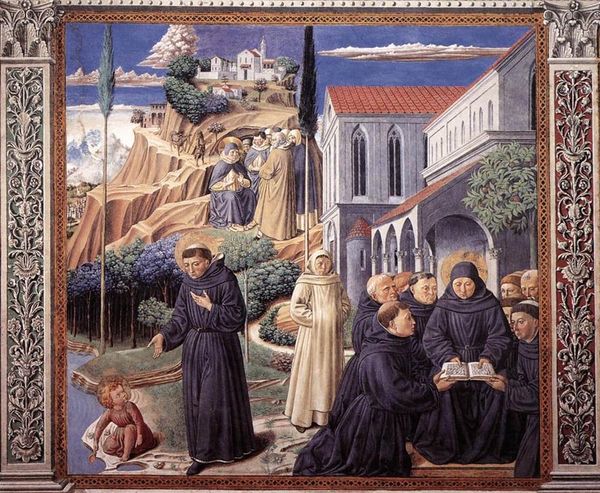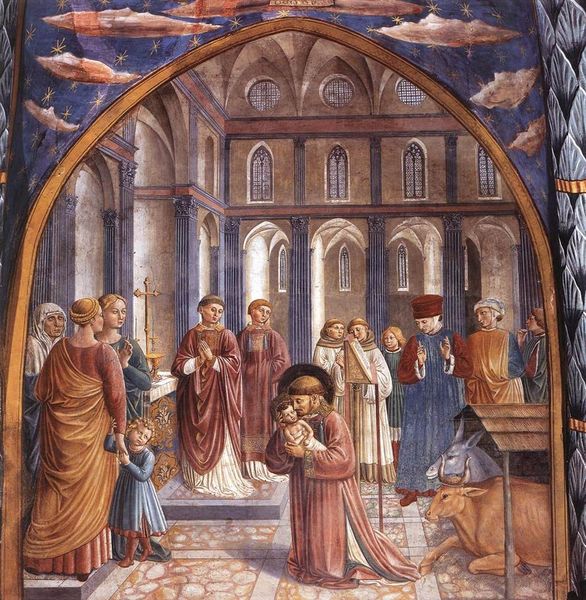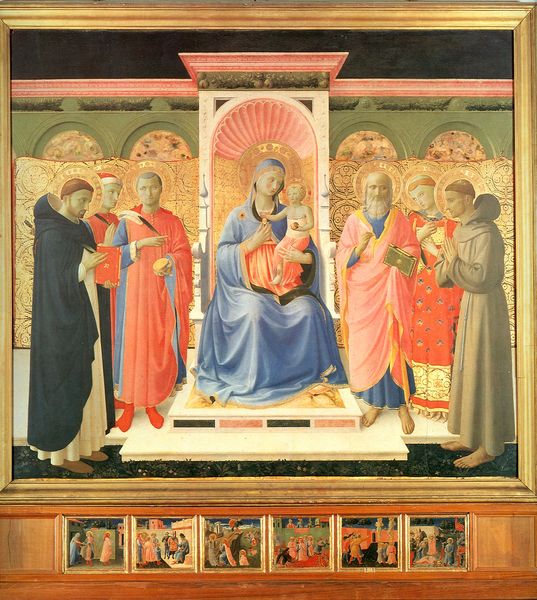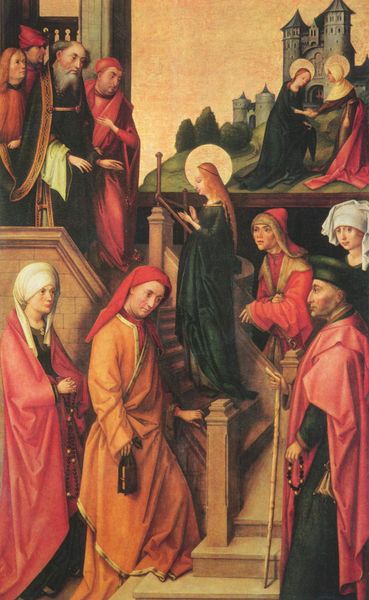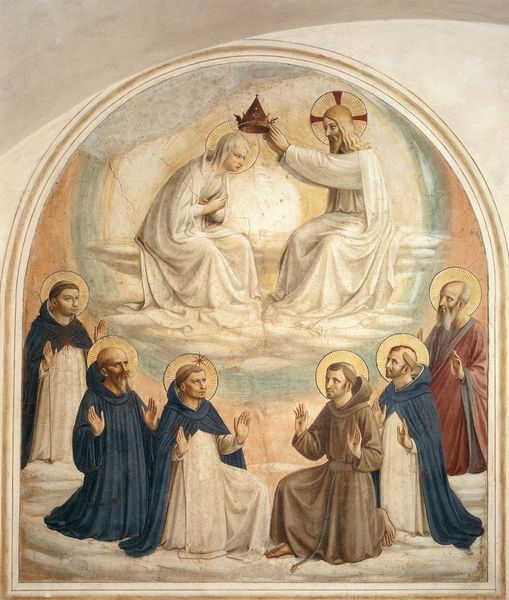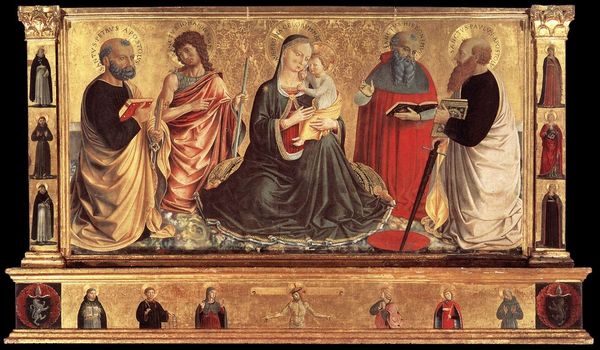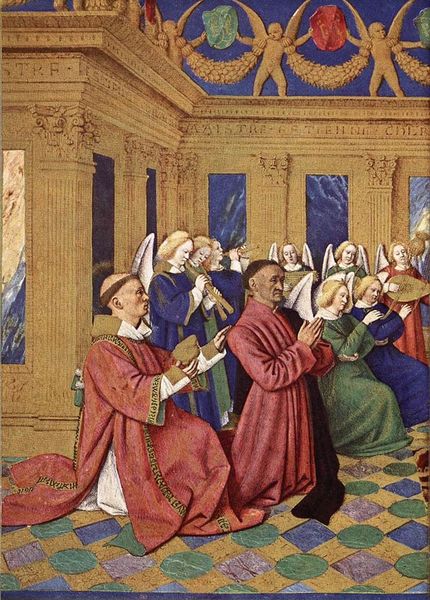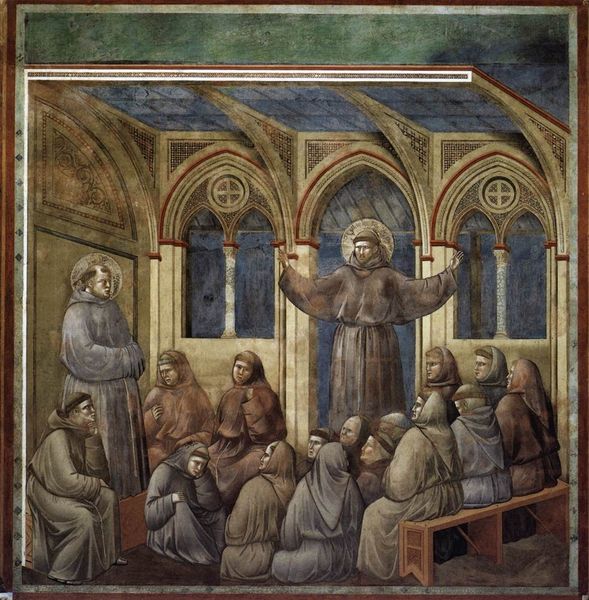
painting, oil-paint, fresco
#
portrait
#
painting
#
death
#
oil-paint
#
sculpture
#
holy-places
#
fresco
#
oil painting
#
christianity
#
genre-painting
#
history-painting
#
academic-art
#
italian-renaissance
Dimensions: 220 x 230 cm
Copyright: Public domain
Curator: Here we have Benozzo Gozzoli's "Death of St. Monica," a fresco dating back to around 1465, found within the Sant'Agostino Church in San Gimignano. Editor: My first impression is of serene melancholy. There's an unusual calmness about it. It’s also striking how staged it feels, almost like a theater production. Curator: Absolutely. The scene is rich with layered imagery. We see Monica on her deathbed surrounded by mourners, yet it's presented within this detailed architectural framework. What symbolism stands out for you? Editor: Well, the most immediately striking element for me is the symbolic haloed image of her ascending to heaven—a very classic iconographic rendering, contrasting the earthly scene with the heavenly promise. Notice the careful arrangement of figures, directing our eyes upwards. But I am very curious about those putti at the bottom right? Do they reference Classical imagery here? Curator: It's fascinating, isn't it? Gozzoli expertly blends Christian themes with a nod to the classical world, reflecting the burgeoning Humanism of the Renaissance. And these putti give a glimpse of every day Florentine life, a glimpse that allows the artist to speak directly to the world he knows and is surrounded by. Saint Monica, the mother of St. Augustine, was seen as an exemplar of faith, which helps explain the rather theatrical presentation of her passing and those architectural allusions you observed, it lends great importance to this specific scene. It’s a carefully crafted piece meant to instruct. Editor: The box that the Saint closest to the bed is holding certainly has important symbolic significance too. It gives her the means to speak to and live beyond the immediate scene and setting. Curator: A physical manifestation of Monica’s own role within society? It speaks to the era's developing ideals of saintly women, whose actions influenced powerful people. Editor: Indeed, these figures often transcend pure piety, embodying complex intersections of influence. They were seen as moral, but equally social pillars, holding both worldly and religious symbolic importance. Curator: Seeing through both an historical and iconographical scope reveals how Gozzoli was shaping public memory and negotiating complex religious and cultural narratives in one remarkable fresco. Editor: I agree completely. It’s a painting about so much more than just the death of a saint; it speaks volumes about her life, society and legacy.
Comments
No comments
Be the first to comment and join the conversation on the ultimate creative platform.
